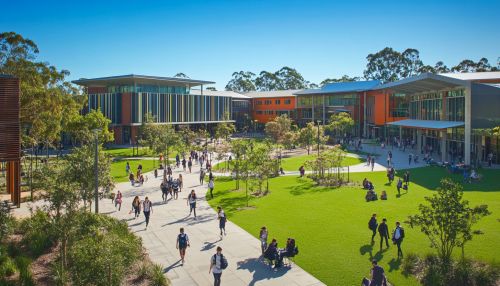Higher Education in Australia
Overview
Higher education in Australia is a diverse and dynamic sector that plays a crucial role in the nation's economic, social, and cultural development. It encompasses a range of institutions, including universities, technical and further education (TAFE) colleges, and private providers. The Australian higher education system is known for its high-quality teaching, research, and strong international reputation. This article explores the structure, governance, funding, and challenges of higher education in Australia, providing a comprehensive understanding of its current state and future directions.
Historical Context
The history of higher education in Australia dates back to the 19th century, with the establishment of the University of Sydney in 1850 as the nation's first university. Over the years, the sector has evolved significantly, influenced by various social, economic, and political factors. The post-World War II era saw a rapid expansion of universities, driven by increased demand for higher education and government investment. The Dawkins reforms of the late 1980s and early 1990s further transformed the landscape by merging colleges of advanced education with universities, creating a unified national system.
Structure of Higher Education
Australia's higher education system is characterized by a mix of public and private institutions. There are 43 universities, including 40 Australian universities, two international universities, and one private specialty university. Public universities dominate the sector, accounting for the majority of student enrollments and research output. Technical and Further Education (TAFE) institutions offer vocational education and training (VET) programs, providing pathways to higher education and employment.


Universities
Universities in Australia are autonomous institutions that offer undergraduate and postgraduate programs across various disciplines. They are involved in both teaching and research, with a strong emphasis on producing high-quality research outputs. The Group of Eight (Go8) is a coalition of leading Australian universities known for their research-intensive focus and international rankings.
Vocational Education and Training (VET)
The VET sector in Australia provides practical and skills-based education, primarily through TAFE institutions and private providers. VET programs are designed to meet the needs of industry and the labor market, offering qualifications ranging from certificates to advanced diplomas. The sector plays a critical role in equipping students with the skills required for various trades and professions.
Governance and Regulation
The governance of higher education in Australia involves multiple stakeholders, including the federal government, state and territory governments, and individual institutions. The Tertiary Education Quality and Standards Agency (TEQSA) is the national regulatory body responsible for maintaining quality standards and accrediting higher education providers. The Australian Qualifications Framework (AQF) provides a national policy for regulated qualifications, ensuring consistency and quality across the education system.
Federal Government Role
The federal government plays a significant role in funding and policy development for higher education. It provides funding through the Commonwealth Grant Scheme (CGS) and the Higher Education Loan Program (HELP), which supports students in accessing higher education. The government also sets national priorities for research and innovation, influencing the strategic direction of universities.
State and Territory Governments
State and territory governments are responsible for the regulation and funding of VET institutions, including TAFEs. They work in collaboration with the federal government to ensure the alignment of education and training with local industry needs and economic priorities.
Funding and Economics
The funding of higher education in Australia is a complex system involving government contributions, student fees, and private investment. The Commonwealth Grant Scheme (CGS) is the primary source of funding for public universities, providing subsidies for domestic students. International students, who pay full fees, are a significant source of revenue for universities, contributing to the financial sustainability of the sector.
Student Fees and Financial Support
Student fees in Australia vary depending on the level of study, field of education, and residency status. Domestic students are eligible for government-subsidized places and can access the Higher Education Loan Program (HELP) to defer payment of their fees. International students are required to pay full tuition fees, which are a major source of income for universities.
Research Funding
Research funding in Australia comes from various sources, including government grants, industry partnerships, and philanthropic contributions. The Australian Research Council (ARC) and the National Health and Medical Research Council (NHMRC) are the primary government bodies that provide competitive grants for research projects. Universities also engage in industry collaborations to secure additional funding and enhance the impact of their research.
Challenges and Opportunities
The higher education sector in Australia faces several challenges, including funding constraints, increasing competition, and the need to adapt to technological advancements. The COVID-19 pandemic has further exacerbated these challenges, impacting international student enrollments and financial stability. However, the sector also presents opportunities for growth and innovation, particularly in the areas of online education, research commercialization, and international collaboration.
Internationalization
Australia is a popular destination for international students, attracted by its high-quality education and multicultural environment. The internationalization of higher education offers opportunities for cultural exchange, research collaboration, and economic benefits. However, it also poses challenges related to student support, integration, and the sustainability of reliance on international student fees.
Technological Advancements
The rapid advancement of technology is transforming the higher education landscape, offering new opportunities for teaching and learning. Online education and digital platforms are becoming increasingly important, providing flexible and accessible learning options for students. Universities are investing in technology to enhance the student experience and improve educational outcomes.
Future Directions
The future of higher education in Australia will be shaped by various factors, including demographic changes, technological advancements, and global trends. The sector will need to adapt to the evolving needs of students and the labor market, ensuring that graduates are equipped with the skills required for the future workforce. Innovation in teaching and research, along with strategic partnerships, will be key to maintaining the competitiveness and relevance of Australian higher education.
